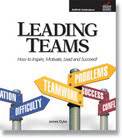Thanksgiving Day is an annual reminder of the importance of gratitude—both as a mindset and a practice. Is gratitude really that important???? Research enables us to answer that with a resounding yes! Many studies have shown:
Gratitude is good for you!
- It improves wellbeing—promoting self-esteem, self-worth, and ethical behavior
- It reduces stress and build resilience
- It’s a social tonic—helping us to build positive relationships; experience more patience; feel less envy; and diminish negative emotions like anger, bitterness, and greed.
- It also feeds our positive mental outlook and keep it at a more consistently high level (psychologists associate this with the phenomenon of hedonic adaptation).
Furthermore…
Gratitude is good for you in the workplace!
Studies have shown when people feel grateful…
- They’re willing to devote more effort to help others
- To be loyal even at a cost to themselves
- To be more willing to share both credit and benefits from their success
- It can have a positive impact on the culture at work—including reducing workplace mistreatment.
And here’s an additional insight into gratitude that I want to focus on in this article:
Telling your colleague that you feel grateful for them increases their willingness to help, likely because they feel valued.
If you’re in a leadership role, you not only want to express your gratitude to subordinates and colleagues, but also encourage your team members to do the same—and show them how. REMEMBER: One of your most powerful sources of influence in the workplace is your behavior—what you model for others!
How to Say THANK YOU at Work
Keep these simple guidelines in mind whenever you want to express gratitude to others at work:
1. Be timely. Say “thanks” as close as possible to their good deed; as soon as you can after their actions. Having said that…it’s never too late!
2. Be specific. Say exactly what it was—about what they did—that was such a great thing.
NOT THIS: That was a great presentation!
THIS: That was a great presentation—it was concise; right to the point; with eye-catching visuals; and a heart-warming story to really grab our attention!
3. Be relevant. Show how it had a positive impact or effect—on you; on your team; on colleagues in other departments; on customers or clients; on the organization and its success!
LIKE THIS: Your presentation really highlighted the value of our project and showed everyone how hard our whole team worked, to make it a success!
4. Be personal. Don’t just send an email. A hand-written note is much more personal. It sends the message that you cared enough to take the time to put your thoughts down with pen and paper. If you’re hampered by working remotely, find a way to personalize electronic messaging with a clever graphic or emoji.
Up Close and Personal
In my book, Leading Teams—How to Inspire, Motivate, Lead and Succeed!, I tell the story of the yellow sticky note “thank you” I attached to a report my assistant compiled for me. It had a simple message on it: You Rock! That yellow sticky note was pinned to the wall of her cubicle until her last day on the job. It meant that much to her!
For more help with this—especially if you’re a manager or supervisor—download this tool I created—complete with instructions. It’s a helpful form you can print and use and includes examples to give you some ideas about what to say and how to say it. It’s free, and there are no strings attached! You can view or download it with this link:
http://thebossdoctor.net/wp-content/uploads/2019/09/PTRAIN05.pdf
If you want more clear-headed ideas and practical tools, stay tuned! There is more great content coming in the future!
Until next time… Yours for better leaders and better organizations,
Dr. Jim Dyke – “The Boss Doctor” ™ helping you to BE a better boss and to HAVE a better boss!





